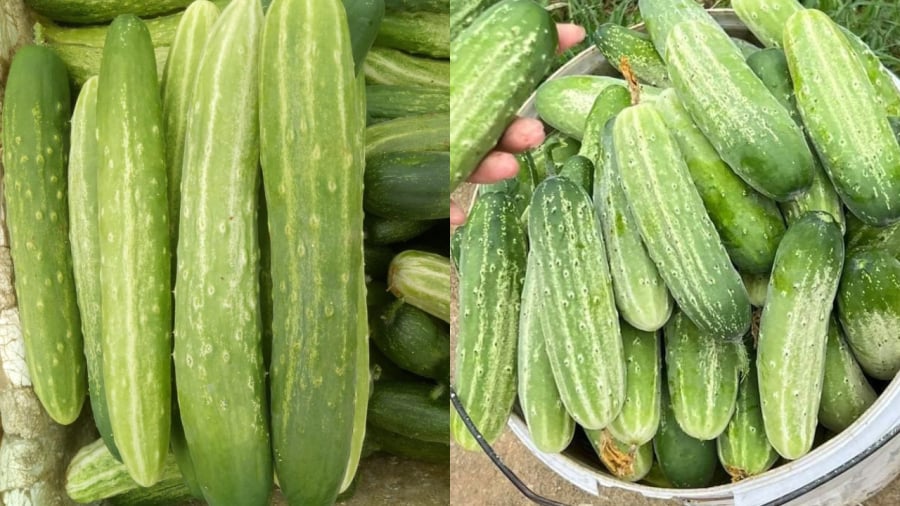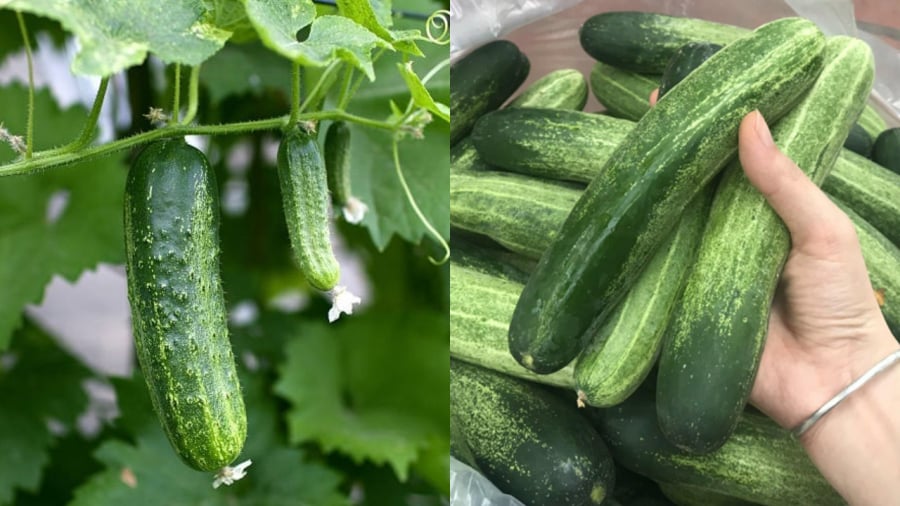Cucumbers are a popular choice for many due to their versatility; they can be enjoyed raw, in salads, juices, smoothies, or even as a skin-nourishing face mask. This refreshing fruit is high in water content, packed with nutrients, and low in calories, making it a favorite among those aiming to shed a few pounds.
However, selecting the perfect cucumber is an art that not everyone masters. A common issue faced by many is encountering bitter cucumbers with large, hard seeds. To avoid this, consider the following tips.
Reasons for Bitter Cucumbers
The bitterness in cucumbers can be attributed to a lack of sunlight or prolonged water deprivation during the plant’s growth. Excessive use of fertilizer or nitrogen-based compounds can also result in a bitter taste.

Suboptimal growing conditions can lead to bitter cucumbers.
Tips for Choosing Cucumbers
When selecting cucumbers, pay attention to the color of the fruit. The ideal cucumber should have a vibrant green skin with an even tone, devoid of any yellow spots.
Opt for cucumbers with a straight, slender shape, avoiding those that are curved or bent. Generally, the straighter cucumbers tend to be crisper and more flavorful than their rounder counterparts.
Steer clear of cucumbers with yellow blemishes and shriveled skin. These are indicators of age, and such cucumbers are likely to be less crisp and may pose potential health hazards.
Additionally, avoid cucumbers that are swollen in the middle with tapered ends, as these tend to have larger seed cavities and are less sweet.

Examine the skin of the cucumber carefully before purchasing.
Look for cucumbers with a thin layer of white fuzz on the skin, a sign of freshness. This natural coating helps retain moisture, keeping the cucumber crisp and fresh. Simply wash it off before consumption. Fuzz-covered cucumbers are usually crisper and sweeter.
Smaller cucumbers are generally sweeter and less likely to be bitter than larger ones.
Prior to eating, thoroughly wash the cucumbers with diluted salt water, lemon/vinegar water, or warm water to remove any surface impurities.
Cucumber skin is packed with nutrients, so it’s best to keep it intact. However, if you have concerns about pesticide residue, feel free to peel the skin away.

































